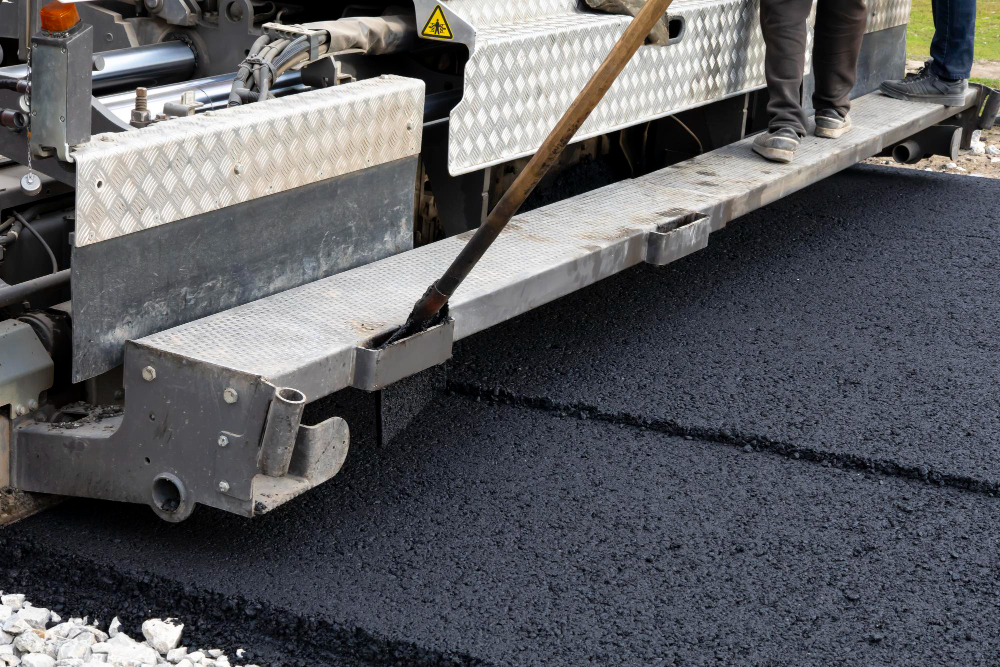Does Temperature Matter for Asphalt Paving?

When the morning sun peeks over the horizon, and the world awakes to another day, asphalt begins a silent dance with the heavens. You might not hear its steps, but the road beneath your feet will certainly feel its waltz toward perfection. Asphalt paving is an often-overlooked symphony of science and labor, one where temperatures play a central role in the quality of the final composition.
For a topic that seems to mirror the dry facts laid in the pavement, it’s surprising how many intricate layers warm up to the subject of asphalt temperature. Let’s dive into this critical factor and understand why precision is more than just hot air in the world of paving.
The Basics: Understanding Asphalt Properties
Before a road becomes a ribbon of black, there’s a mix of liquid binders and crushed stone in formation. Known as hot mix asphalt (HMA), this form of the material contains bitumen – a suitable shoulder for the weight of vehicle traffic. Key to understanding the impact of temperature on HMA is realizing that asphalt is a viscoelastic material – a hybrid between a liquid and a solid.
At high temperatures, asphalt turns liquid enough to mix with aggregate, ensuring a dense, durable surface. At low temperatures, however, asphalt becomes brittle and prone to cracking. It’s this balance between hot and cold that forms the parable principle of any pavement project.
Hot Stuff: Ideal Temperature for Paving
The ideal temperature range for paving with HMA generally falls between 275°F and 325°F. This high heat offers a fluid mix that compacts tightly, eliminating air voids and creating the dense bond necessary for a long-lasting road. The question arises – why so hot?
Temperatures in this range ensure that the bitumen reaches the correct viscosity for mixing and compacting. But it’s not just the initial temperature that’s crucial. Controlling the drop in temperature as the mix is transported and laid is equally vital. This process, often referred to as thermal segregation, can lead to an uneven surface and, potentially, structural issues down the road.
The Full Mix: Understanding How Temperature Affects Compaction
Compaction is the phase when the HMA is laid and literally crushed into place by heavy rollers, a process that’s particularly sensitive to temperature. If the mix is too cold, compaction is difficult, and density suffers. Conversely, if the mix is too hot, asphalt may be pushed to the edges, causing rutting and an uneven surface.
To ensure proper compaction, the mix temperature must be just right for the density required in the project specifications. This level of precision means that while the temperature of the asphalt when initially loaded onto the truck is important, monitoring and adjusting temperatures throughout the process is equally essential.
Time is of the Essence: Temperature’s Role in Workability
Beyond compaction, the workability of the mix – essentially, how easy or hard it is for the paving crew to handle – is heavily influenced by temperature. If the mix cools too quickly, it can become unworkable before the crew has had a chance to lay it down. On the other hand, working in excessively high temperatures can lead to a host of problems, from segregation to runoff.
Finding the ‘Goldilocks zone’ of workable temperatures is a matter of experience and precision. It involves closely timing each step of the process, from the mixing plant to the final roll of the roller.
Adverse Effects: The Consequences of Ignoring Temperature
The failure to properly manage temperatures during asphalt paving can have extensive ramifications. A road that’s laid too cold may appear fine initially, but it’s likely to develop premature cracks and potholes. These are not merely cosmetic flaws; they undermine the structural integrity of the entire road, leading to costlier repairs and a shorter lifespan.
Conversely, asphalt laid at excessively high temperatures may suffer from raveling, rutting, or even a phenomenon known as longitudinal cracking, which occurs when the asphalt is stretched beyond its limits.
The Human Element: How Experience and Skill Make the Difference
While technology can aid in temperature monitoring and management, it’s the skill and experience of the paving crew that ultimately dictate the success of a project. A seasoned crew will be attuned to the tactile changes in the asphalt as it cools and will know precisely when to roll it for the best results.
Understanding the ambient conditions also plays a significant role. Humidity and wind, for example, can accelerate or decelerate the cooling process, and a skilled crew will adjust their techniques accordingly.
Going the Extra Mile: Best Practices for Temperature Maintenance
To mitigate temperature-related risks, there are several best practices that paving companies can employ:
- Start with Quality Mix and Material: The right aggregate mix and high-quality binders can mitigate some risks associated with temperature.
- Monitor and Control: Strict monitoring and active control throughout the process can ensure that the HMA stays within the optimal temperature range.
- Adapt to Conditions: Experienced crews know that adhering to a fixed temperature is not always feasible. They must adjust their methods on the fly to maintain the HMA’s properties.
- Stay Connected: Communication between the mixing plant, transporters, and the paving crew can ensure that everyone is on the same page regarding temperature management.
Conclusion: Temperature is the Thermal Linchpin
Asphalt paving is as much an art as it is science, and the dance of temperature throughout the process is a testament to this. By meticulously managing the heat, we not only craft roads that are smooth to ride but also sturdy enough to endure the changing seasons.
For anyone seeking out asphalt paving in Kerrville, Texas, ensuring that temperature is a top consideration is key to a successful and long-lived pavement project. C. Brooks Paving is a leader in this art and science, dedicated to providing quality and durability through every degree on the thermometer. Contact us today to start your journey to better roads.